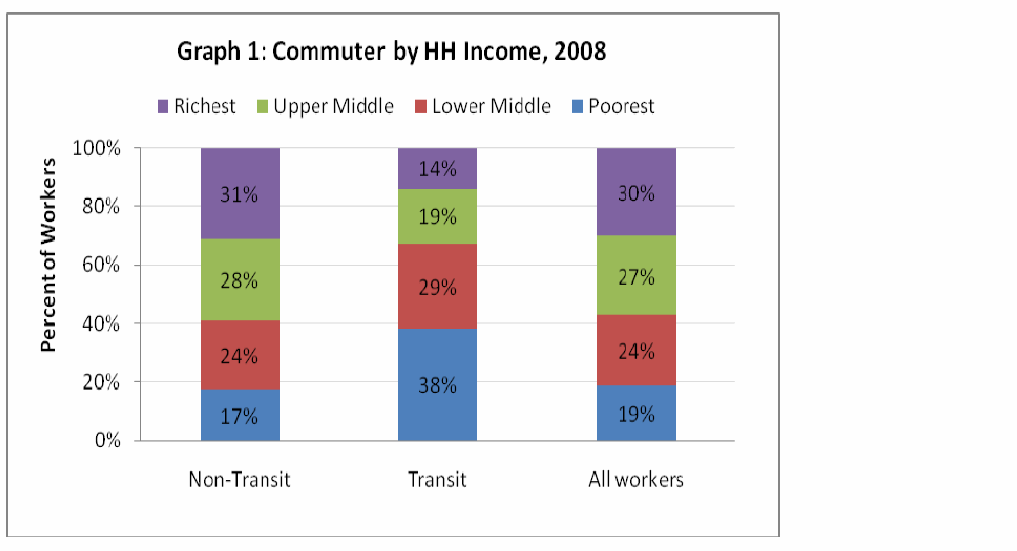BUS RIDERS UNION
INTRODUCTION
This paper examines the economic status of workers in Los Angeles County since the Metropolitan Transportation Authority (MTA) last analyzed the impact of fare raises in 2007. The central question addressed is how much the economic status of low-income transit riders has changed since the 2007 MTA report. The more dramatic the change in the status of low-income riders, the more likely that MTA’s analysis is outdated and needs to be revised. It is reasonable to believe that the change in the status of low-income riders has been significant since the U.S. has gone through the longest and deepest recession in over a half-century. According to the National Bureau of Economic Research, the recession started in December 2007 and hit a trough in June 2009. The recovery, however, has been painfully slow as economic growth has been anemic and employment continues to lag behind. In fact, the most recent seasonally adjusted unemployment rate from the U.S. Bureau of Labor Statistics is 9.6% for September 2010—a rate that shows little decline from its peak of 10.1% in October 2009. Further, the rate for California is even higher than the national rate: 12.4% in September 2010. Given the national and state context, it is not surprising that low-wage workers in Los Angeles County have also fared poorly over the last three to four years.
To address the question of how much the economic status of low-income transit riders has changed since 2007, this paper examines available data from the American Community Survey and the Current Population Survey, as well as from other sources. The paper is divided into four parts:
Part one provides a profile of workers who use public transportation as their commute mode, and finds that a disproportionate share live in low-income households, are less likely to have access to a car, rent rather than own their homes, and belong to a minority group.
Part two examines the overall economic conditions for Los Angeles County by measuring the jump in unemployment rates and decline in per capita income.
Part three disaggregates the change in income in 2006 and 2009 for households with at least one worker and finds that the impact of the recession has been particularly severe on those in the bottom quartile—a problem compounded by the fact that rents have gone up, including the rents at the lower end of the housing market.
The paper closes with a set of recommendations for a much needed reanalysis of the impacts of any proposed fare increase.
The paper also includes an appendix that discusses the data sources, their comparability with other sources, and general limitations. The data variables and samples used for this paper are also provided.
 Download full version (PDF): Analysis of the Economic Conditions Facing Low-Income MTA Riders
Download full version (PDF): Analysis of the Economic Conditions Facing Low-Income MTA Riders
About the Bus Riders Unions
www.thestrategycenter.org/project/the-bus-riders-union
“Recognized nationally for its historic civil rights Consent Decree and signature creative tactics, the Bus Riders Union is a multiracial dynamo of 200 active members, 3,000 dues-paying members, and 50,000 supporters on the buses of L.A. The BRU has literally saved public transportation in Los Angeles and become the country’s largest grassroots mass transit advocacy organization. From our focus on mass transit, the BRU carries out a wide, multi-issue progressive agenda based in comprehensive principles of unity and strong membership agreement.”
Tags: CA, California, Labor/ Community Strategy Center, Los Angeles, MTA






 RSS Feed
RSS Feed